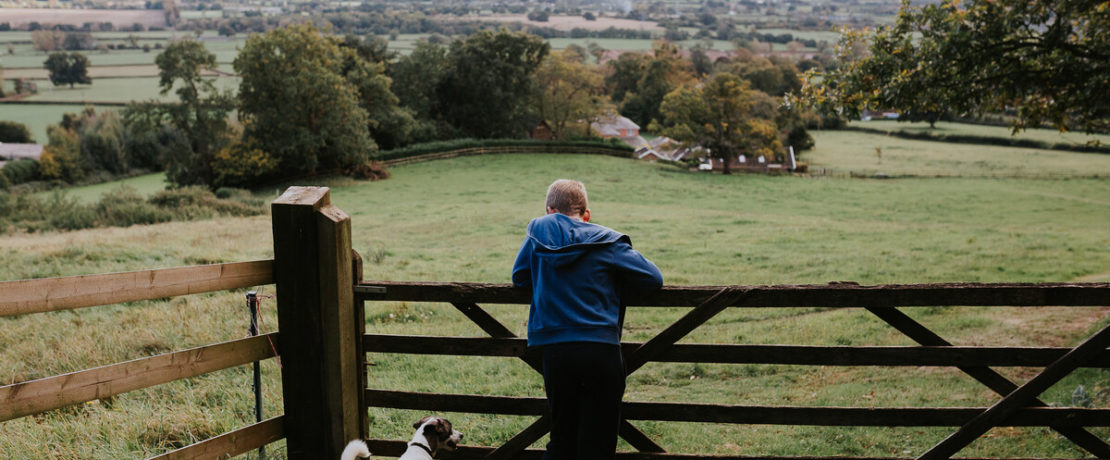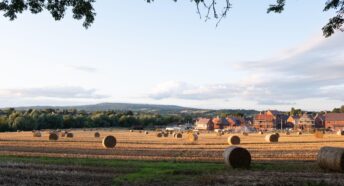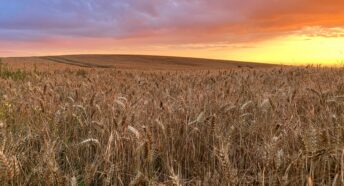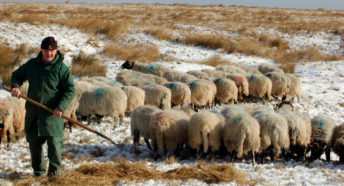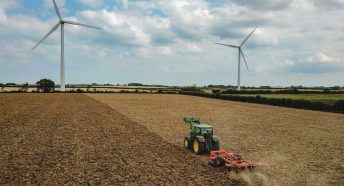We call for land strategy and new planning rules to guard food security
There’s been a hundred-fold increase in our best farmland lost to development in little more than a decade, new CPRE research has found. And 60% of our finest agricultural land is at risk of flooding. As a result, we’re telling government we need a land strategy and new planning rules to safeguard our food security.
Our newly published research on food security has found almost 14,500 hectares of the country’s best agricultural land, which could grow at least 250,000 tonnes of vegetables a year, has been permanently lost to development in just 12 years. This is enough to feed the combined populations of Liverpool, Manchester and Sheffield their recommended five-a-day fruit and vegetables.
There was a huge rise in high quality – known as Best and Most Versatile (BMV) – agricultural land set aside for housing and industry between 2010 and 2022, from 60 hectares to more than 6,000 hectares per year. As a result, almost 300,000 homes were built on more than 8,000 hectares of prime farmland in that time. Yet our previous research has shown there is space for 1.3 million homes on previously developed brownfield land, much of it in areas of the midlands and north most in need of regeneration.
On top of this, our research also reveals that an increased risk of severe flooding caused by climate change will further challenge our food security. More than 200,000 hectares – or 60% – of England’s finest Grade 1 agricultural land is within areas at the highest risk of flooding. This is because our most productive farmland is disproportionately close to river and coastal flood plains, with 75% of the best quality land in the East Midlands and 95% in the east of England at the highest risk level.
A different approach to land use
We’re telling the government it’s time to introduce a comprehensive land use strategy. It must provide a planning framework to balance the competing demands for farming, housing and energy needs, while also meeting legally binding net zero targets. The planning rulebook, called the National Planning Policy Framework (NPPF), is due to be updated next year, and we want to make sure it prioritises a ‘brownfield first’ approach to housebuilding to reduce the pressure of development on our green fields. And the research we’ve just published shows there is an urgent need for a firm presumption against development on our best agricultural land.
Crispin Truman, chief executive of CPRE, the countryside charity, said:
‘For the first time in several generations, our food security is at risk – yet we’ve seen a 100-fold increase in the loss of our best farmland to development since 2010. Heating, eating and housing are fundamental needs. A healthy environment, mitigating and adapting against the devastation threatened by the climate emergency, is the bedrock that underpins them all. We need to know what to put where. That’s why we need a land use strategy.
‘Maintaining agricultural land for domestic food production is critical. This must be achieved in the context of addressing and adapting to climate change, reversing the loss of nature and increasing demands on land for other purposes, not least housing and production of renewable energy.
‘As we face a cost-of-living crisis, housing crisis and the adjustment of our farming sector to post-Brexit subsidies, we have multiple, critical priorities for our land. We need to move away from intensive farming practices and towards a more ‘multifunctional’ approach, reconciling food production with better management for natural and cultural heritage, and for public access. Policies which are put in place now will be crucial in the coming years to ensure the most efficient use of our land in the face of these challenges.’

We believe this report on the loss of agricultural land is the first to quantify the scale of development nationally on the two highest and most productive grades of farmland. The east of England has seen high levels of development on BMV land, with over 3,200 hectares lost over the past 12 years. This is followed closely by the south east region, with almost 3,000 hectares of BMV land disappearing overall, and the greatest loss to development of Grade 1 land, which is rated excellent quality.
Balancing food and energy needs
We also found that a further 1,400 hectares of the best farmland was taken out of agricultural production for renewable energy projects in the same period. We estimate that this land produces less than 3% of the UK’s total installed solar capacity, suggesting it’s entirely possible for the government to balance managing both food and energy security, particularly if solar panels on rooftops are prioritised.
Climate change is likely to have severe consequences for our most valuable farmland and an increased threat to food security. Protecting our most productive agricultural land from permanent development now is vital if we’re to maintain a secure food supply in future.
Help us safeguard farmland
Our report lays bare the scale of productive farmland that is being permanently lost to development. We can put pressure on government to address this, with your help. As recently as January 2022, we’ve been instrumental in implementing meaningful policy changes.
With food security at risk from development and flooding, your support and as little as £5 a month will help us keep pressure on the government. We want to ensure that they protect quality agricultural land, adopt brownfield first policies and draw up a suitable land use strategy. If you’d like support our vision for a thriving and beautiful countryside, why not become a member?
